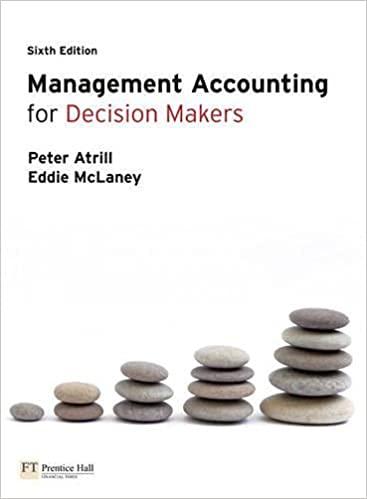operating iHcome if uT Kijaudu s were sold? I OST-VOLUME-PROFIT ANALYSIS 3-39 CVP analysis, shoe stores (continuation of 3-38). Refer to requirement 3 of Problem 3-38. In this problem, assume the role of the owner of WalkRite. 1. Calculate the number of units sold at which the owner of WalkRite would be indifferent between the original salary-plus-commissions plan for salespeople and the higher fixed-salaries-only plan. 2. As owner, which sales compensation plan would you choose if forecasted annual sales of the new store were at least 55,000 units? What do you think of the motivational aspect of your chosen compensation plan? 3. Suppose the target operating income is $168,000. How many units must be sold to reach the target operat- ing income under (a) the original salary-plus-commissions plan and (b) the higher-fixed-salaries-only plan? 4. You open the new store on January 1, 2011, with the original salary-plus-commission compensation plan in place. Because you expect the cost of the shoes to rise due to inflation, you place a firm bulk order for 50,000 shoes and lock in the $19.50 price per unit. But, toward the end of the year, only 48,000 shoes are sold, and you authorize a markdown of the remaining inventory to $18 per unit. Finally, all units are sold. Salespeople, as usual, get paid a commission of 5% of revenues. What is the annual operating income for the store? ed 3-40 Alternate cost structures, uncertainty, and sensitivity analysis. Stylewise Printing Company cur- rently leases its only copy machine for $1,000 a month. The company is considering replacing this leasing agreement with a new contract that is entirely commission based. Under the new agreement Stylewise would pay a commission for its printing at a rate of $10 for every 500 pages printed. The company currently charges $0.15 per page to its customers. The paper used in printing costs the company $.03 per page and other variable costs, including hourly labor amount to $.04 per page. operating iHcome if uT Kijaudu s were sold? I OST-VOLUME-PROFIT ANALYSIS 3-39 CVP analysis, shoe stores (continuation of 3-38). Refer to requirement 3 of Problem 3-38. In this problem, assume the role of the owner of WalkRite. 1. Calculate the number of units sold at which the owner of WalkRite would be indifferent between the original salary-plus-commissions plan for salespeople and the higher fixed-salaries-only plan. 2. As owner, which sales compensation plan would you choose if forecasted annual sales of the new store were at least 55,000 units? What do you think of the motivational aspect of your chosen compensation plan? 3. Suppose the target operating income is $168,000. How many units must be sold to reach the target operat- ing income under (a) the original salary-plus-commissions plan and (b) the higher-fixed-salaries-only plan? 4. You open the new store on January 1, 2011, with the original salary-plus-commission compensation plan in place. Because you expect the cost of the shoes to rise due to inflation, you place a firm bulk order for 50,000 shoes and lock in the $19.50 price per unit. But, toward the end of the year, only 48,000 shoes are sold, and you authorize a markdown of the remaining inventory to $18 per unit. Finally, all units are sold. Salespeople, as usual, get paid a commission of 5% of revenues. What is the annual operating income for the store? ed 3-40 Alternate cost structures, uncertainty, and sensitivity analysis. Stylewise Printing Company cur- rently leases its only copy machine for $1,000 a month. The company is considering replacing this leasing agreement with a new contract that is entirely commission based. Under the new agreement Stylewise would pay a commission for its printing at a rate of $10 for every 500 pages printed. The company currently charges $0.15 per page to its customers. The paper used in printing costs the company $.03 per page and other variable costs, including hourly labor amount to $.04 per page







